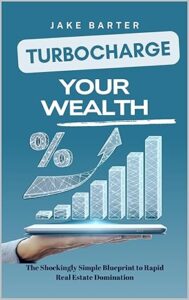Rent-to-own home loans, also known as rent-to-buy or lease options, are becoming increasingly popular in Australia as a way for potential homebuyers to get a foot on the property ladder. This innovative approach to home ownership offers an alternative to the traditional mortgage route, allowing individuals to rent a property with the option to buy it at a later date. But how do rent-to-own home loans work, and are they a viable option for aspiring homeowners in Australia? In this article, we will explore the ins and outs of rent-to-own home loans and evaluate whether they are a practical solution for those looking to purchase a property.
The Basics of Rent-to-Own Home Loans
Rent-to-own home loans involve a contractual agreement between a tenant and a landlord, where the tenant has the option to purchase the property at a predetermined price after a set period of time, typically one to three years. During the rental period, the tenant pays a slightly higher than market rent, with a portion of each payment going towards building up equity in the property.
At the end of the lease term, the tenant can choose to exercise their option to buy the property at the agreed-upon price. If they decide not to proceed with the purchase, they can walk away without any obligation to buy the property. This flexibility is one of the key attractions of rent-to-own home loans, as it allows tenants to test out the property and the neighborhood before committing to a purchase.
How Do Rent-to-Own Home Loans Work in Australia?
Rent-to-own home loans are not as common in Australia as they are in other countries like the United States. However, there are a growing number of companies and investors offering rent-to-own arrangements to potential homebuyers in Australia. These companies typically buy properties and then lease them out to tenants with the option to buy.
One of the main advantages of rent-to-own home loans in Australia is that they can help individuals who may not qualify for a traditional mortgage due to a lack of a deposit or poor credit history. Rent-to-own arrangements allow tenants to build up equity in the property while improving their financial situation, making it easier to secure a mortgage when the time comes to buy the property.
Do Rent-to-Own Home Loans Work?
While rent-to-own home loans can be a viable option for some aspiring homeowners, they are not without their risks. It’s essential for tenants to fully understand the terms of the agreement and the implications of not proceeding with the purchase at the end of the lease term. Some key points to consider include:
- Property Value: The agreed-upon purchase price may not reflect the true market value of the property at the end of the lease term.
- Equity Build-Up: Tenants need to ensure that a portion of their rent payments is going towards building up equity in the property.
- Financial Stability: Tenants should have a clear plan in place to improve their financial situation during the lease term to qualify for a mortgage when the time comes to buy the property.
Ultimately, whether rent-to-own home loans work for individuals in Australia will depend on their specific circumstances and financial goals. It’s essential to seek advice from a financial advisor or real estate expert before entering into a rent-to-own agreement to ensure that it is the right choice for your situation.
Conclusion
Rent-to-own home loans offer a unique opportunity for individuals in Australia to achieve their dream of homeownership without the need for a large deposit or a perfect credit score. While they may not be suitable for everyone, rent-to-own arrangements can provide a stepping stone towards purchasing a property for those who are unable to secure a traditional mortgage.
As with any major financial decision, it’s crucial to thoroughly research and understand the terms of the agreement before committing to a rent-to-own home loan. By weighing the pros and cons and seeking expert advice, aspiring homeowners can determine whether a rent-to-own arrangement is the right path towards achieving their property ownership goals in Australia.

 Turbocharge Wealth
Turbocharge Wealth McDonald’s Monopoly
McDonald’s Monopoly Stock Market
Stock Market Real Estate Secrets
Real Estate Secrets Homeowner’s Code
Homeowner’s Code 30 Ways To Pay Off
30 Ways To Pay Off